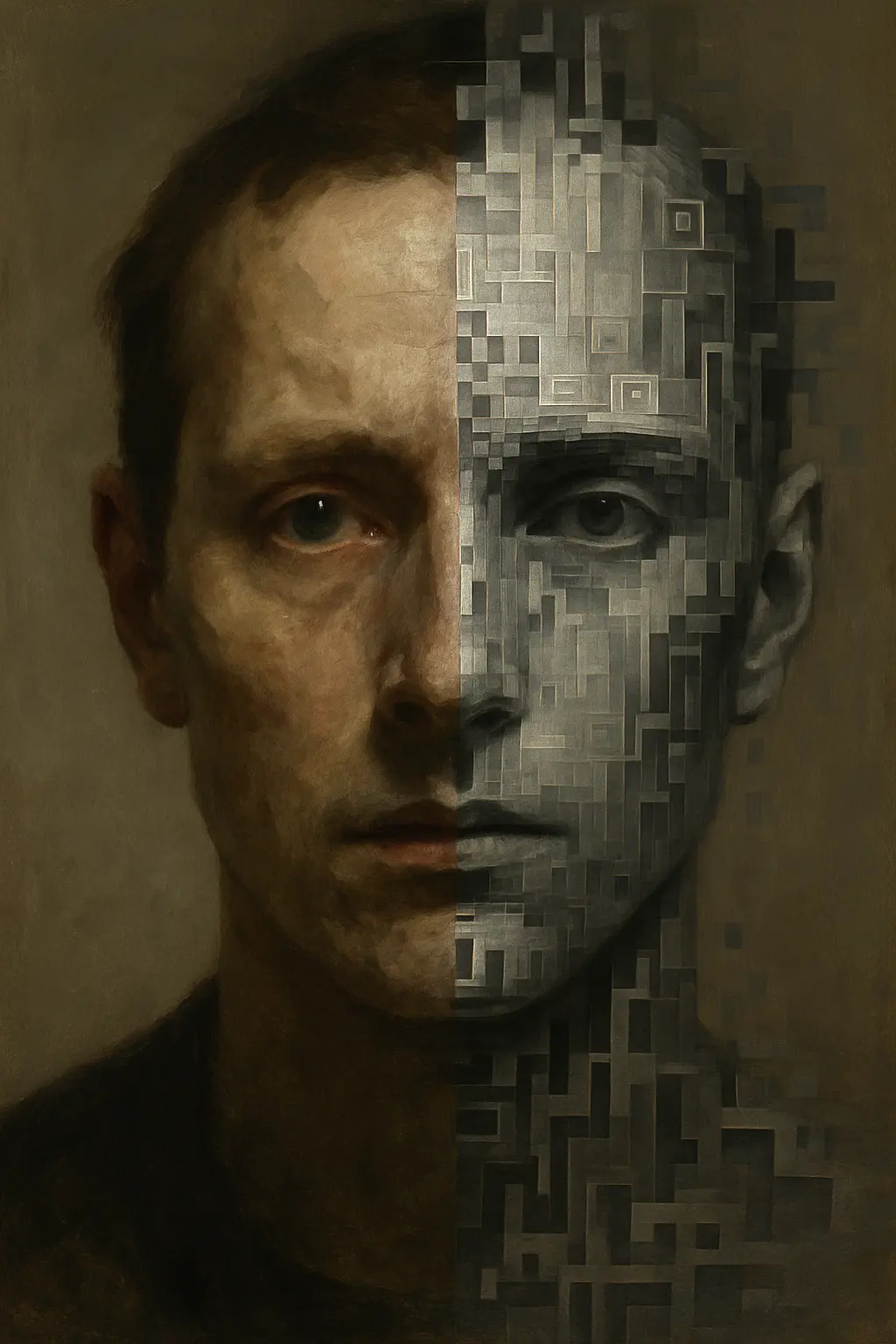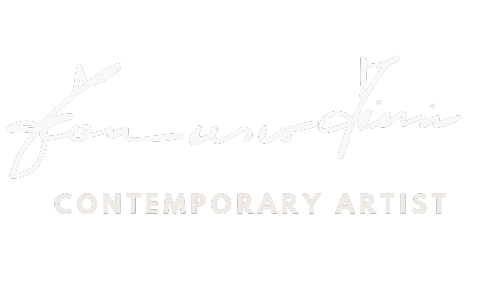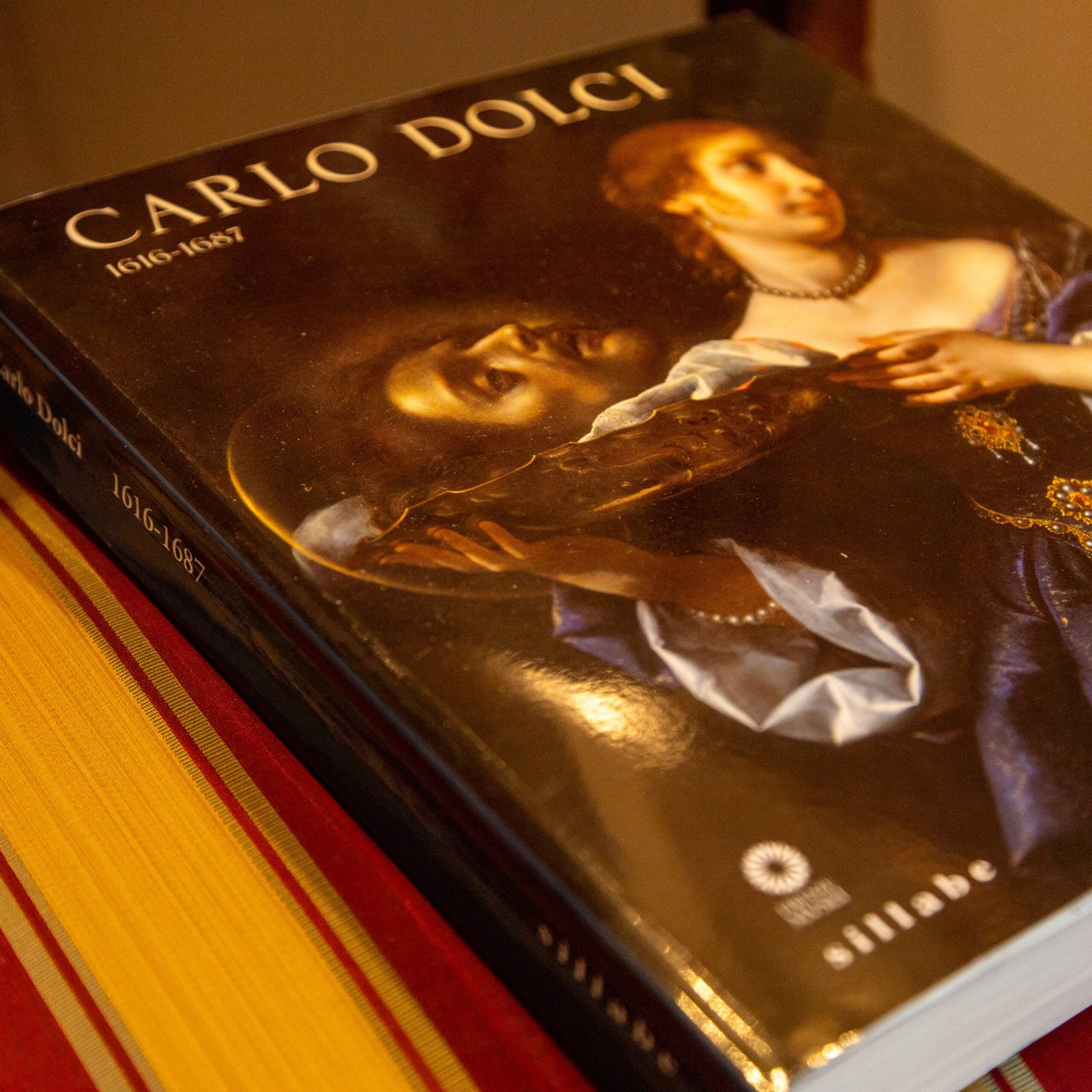The Portrait in the Age of Algorithmic Artists
We live in a time when artificial intelligence penetrates every aspect of life: medicine, marketing, music, cinema — and now also visual art.
But what happens when the machine mimics the human face? When it simulates portraiture? Figurative painting is called upon to answer: is it still necessary?
The Face as a Mirror of Inner Life
“Mental accidents move the human face in different ways […]. Some laugh, some cry, some rejoice, some are saddened […]. These accidents must be matched by the hands, the face, and the whole body.”
— Leonardo da Vinci, Treatise on Painting, par. 282
Painting is not mechanical reproduction but embodied gesture: an inner motion made visible. Consciousness brings the face to life.
A figurative painter is not a camera, nor in competition with one (the major flaw of hyperrealism); nor is it an adversary of the prompt.
The Chiaroscuro of the Psyche
“The soft, vibrant, mobile chiaroscuro ripples the surface of the oval face, revealing both a perfectly rational clarity and an anxious, sensitive tension.”
— Giulio Carlo Argan, History of Italian Art, p. 525
The face is judgment, ambiguity, tension between inner and outer. AI-generated images do not engage with this complexity: they appear complete, yet sterile.
That’s why they feel so empty to those educated to recognize true beauty.
What AI Cannot Emulate
I came across an article by Antonella Braccia (Tony Arms) on LinkedIn, who writes with striking clarity:
“This is the difference AI cannot emulate: the ability to trigger authentic emotions and human connection through imperfection and the unique character that only human intelligence can give to a work of art.”
— Antonella Braccia (Tony Arms), LinkedIn Pulse, September 2, 2024
Figurative painting is not outdated: it is resistance. Resistance to algorithms that flatten, to simulations that feign emotion. It is living imperfection against sterile perfection.
Conclusion: The Face as Visual Truth
I don’t paint the face to reproduce it, but to question it.
In an era of digital simulation, the painted face — the figurative portrait — is a statement. A gesture of depth in a world satisfied with surfaces.
“Creativity is made of emotions, imperfections, and personal stories that no machine can replicate.”
Figurative painting holds onto this: the trace of the human who feels, sees, and perceives the real — not its algorithm.
👉 Discover how this vision translates into my artistic practice. Explore the section “Inside the Work” to encounter the faces I paint.





